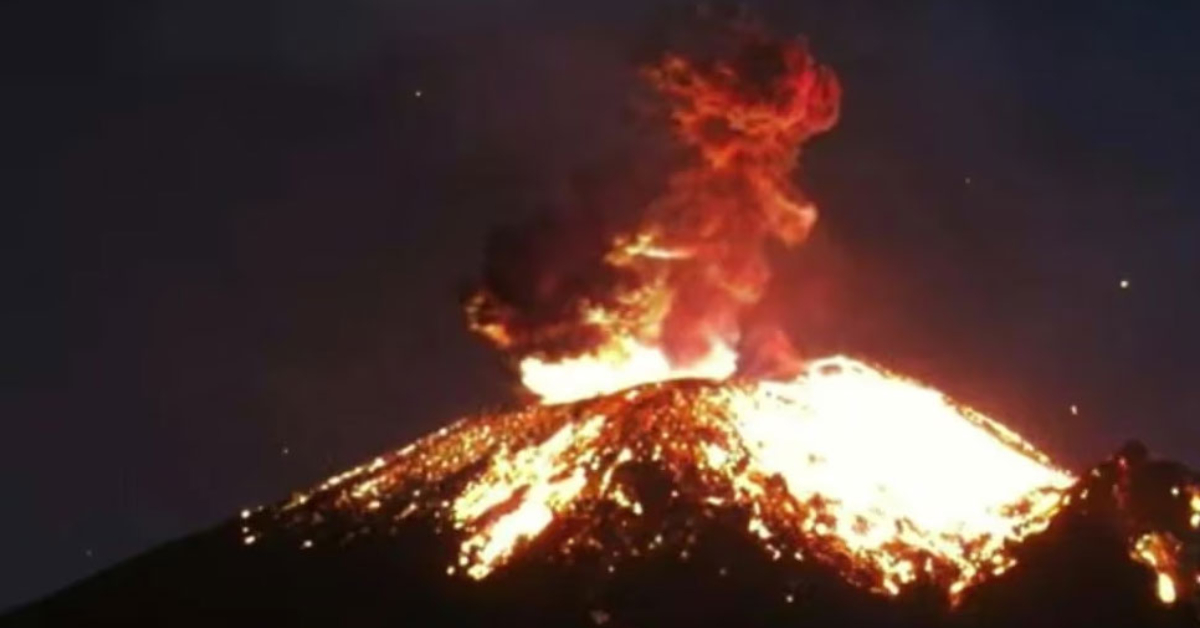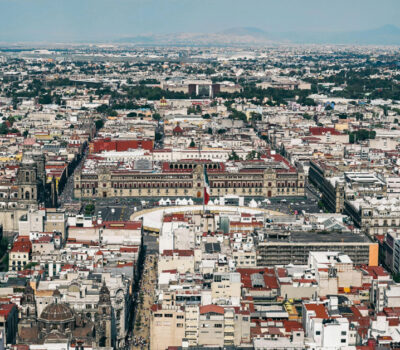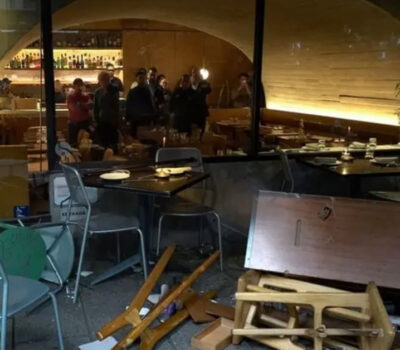Puerto Vallarta (PVDN) – In the early hours of Sunday, Popocatépetl, also known as “Don Goyo,” experienced three explosive events that exceeded two kilometers in height. The first explosion occurred at around 7:26 p.m., ejecting incandescent fragments on the slopes and causing an eruptive column close to 3 kilometers high. As a result, the volcano is currently in Yellow Phase 2, with ash dispersion towards the state of Puebla.
The second explosion occurred at approximately 10:26 p.m., with the eruptive column exceeding 2 kilometers above the crater and ash dispersion towards Puebla. Two hours later, at around 00:33, another strong explosion occurred, which was recorded by the National Center for Disaster Prevention.
Cenapred recorded several minor explosions on Friday and Saturday before the major explosion at 7:00 p.m. on Saturday. Four of these occurred on Friday at 6:05 p.m., 9:56 p.m., 23:02, and 23:57, and two more occurred on Saturday at 07:11 and 08:14 hours. Additionally, 62 minutes of low-amplitude and harmonic tremors and two volcanotectonic earthquakes were recorded at 04:13 and 04:16 hours, both with magnitude 1.4 on Saturday, March 25. In the last 24 hours (from 10 am on March 24 to 10 am on March 25), 235 exhalations were registered, accompanied by water vapor, volcanic gases, and ash. There was slight ash fall in San Nicolás de los Ranchos and today in San Andrés Cholula and Cuautlancingo, Puebla.
Cenapred emphatically reiterated the recommendation NOT TO ASCEND the volcano’s crater, as there is a possibility of explosions involving the emission of incandescent fragments. Popocatépetl is currently in Yellow Phase 2, indicating that its activity is greater. The Volcanic Alert Traffic Light scale has three phases:
Phase one: the volcano shows clear manifestations of activity, such as frequent local volcanic seismicity, fumaroles, or plumes of water and gas vapor, as well as sporadic and light ash emissions.
Phase two: the volcano shows increased activity with sporadic explosions, continuous plumes of steam and water, light to moderate ash fall in nearby towns, the launch of incandescent fragments, and the possibility of short-range pyroclastic flows, growth and destruction of lava domes, as well as short-range mud or debris flows.
Phase three: the volcano presents explosive activity of intermediate to high scale, rapid growth of large domes and their destruction in strong explosions, plumes of water vapor, gases and persistent ashes, explosions of increasing intensity with the launch of incandescent fragments, the possibility of medium-range pyroclastic flows, and notorious ash fall in nearby towns.
Before the ash fall, authorities recommended covering the nose and mouth with a handkerchief or a face mask, cleaning eyes and throat with pure water, wearing frame lenses, and avoiding contacts to reduce eye irritation, closing or covering windows, and staying indoors as much as possible to avoid accidents and tragedies.
About Popocatépetl Volcano
Popocatépetl is an active stratovolcano located in central Mexico, approximately 70 kilometers southeast of Mexico City. The volcano is one of Mexico’s most active and has a long history of eruptions that dates back thousands of years. The name “Popocatépetl” comes from the Nahuatl language, which means “Smoking Mountain”.
Popocatépetl’s current eruptive phase began in 1994, and it has been in a state of constant activity ever since. In recent years, the volcano has been particularly active, with multiple eruptions and explosions that have led to the evacuation of nearby towns and cities.
The volcano is closely monitored by the National Center for Disaster Prevention (CENAPRED), which provides regular updates on its activity. The volcano is currently in Yellow Phase 2, which means that its activity has increased and there is a risk of sporadic explosions, ash fall, and pyroclastic flows.
Popocatépetl is considered to be one of the most dangerous volcanoes in Mexico due to its proximity to large population centers. More than 25 million people live within a 100-kilometer radius of the volcano, including Mexico City, which is the country’s capital.
In addition to the danger posed by explosive eruptions, Popocatépetl also poses a threat from lahars. These are fast-moving mudflows that can be triggered by volcanic activity, particularly if there is heavy rainfall. The lahars can cause extensive damage to infrastructure and homes in nearby towns and cities.
Despite the dangers posed by Popocatépetl, the volcano is also a popular tourist destination. Visitors can hike to the summit of the volcano and enjoy spectacular views of the surrounding countryside. However, due to the ongoing volcanic activity, access to the summit is restricted, and visitors are advised to check with local authorities before attempting to climb the volcano.
In conclusion, Popocatépetl is a highly active volcano that poses a significant threat to nearby towns and cities in Mexico. While it is an important tourist destination, visitors should exercise caution and follow the recommendations of local authorities to ensure their safety. Ongoing monitoring and research will be necessary to better understand the volcano’s behavior and mitigate the risks associated with its activity.
Puerto Vallarta (PVDN) - In the early hours of Sunday, Popocatépetl, also known as "Don Goyo," experienced three explosive events that exceeded two kilometers in . . .












